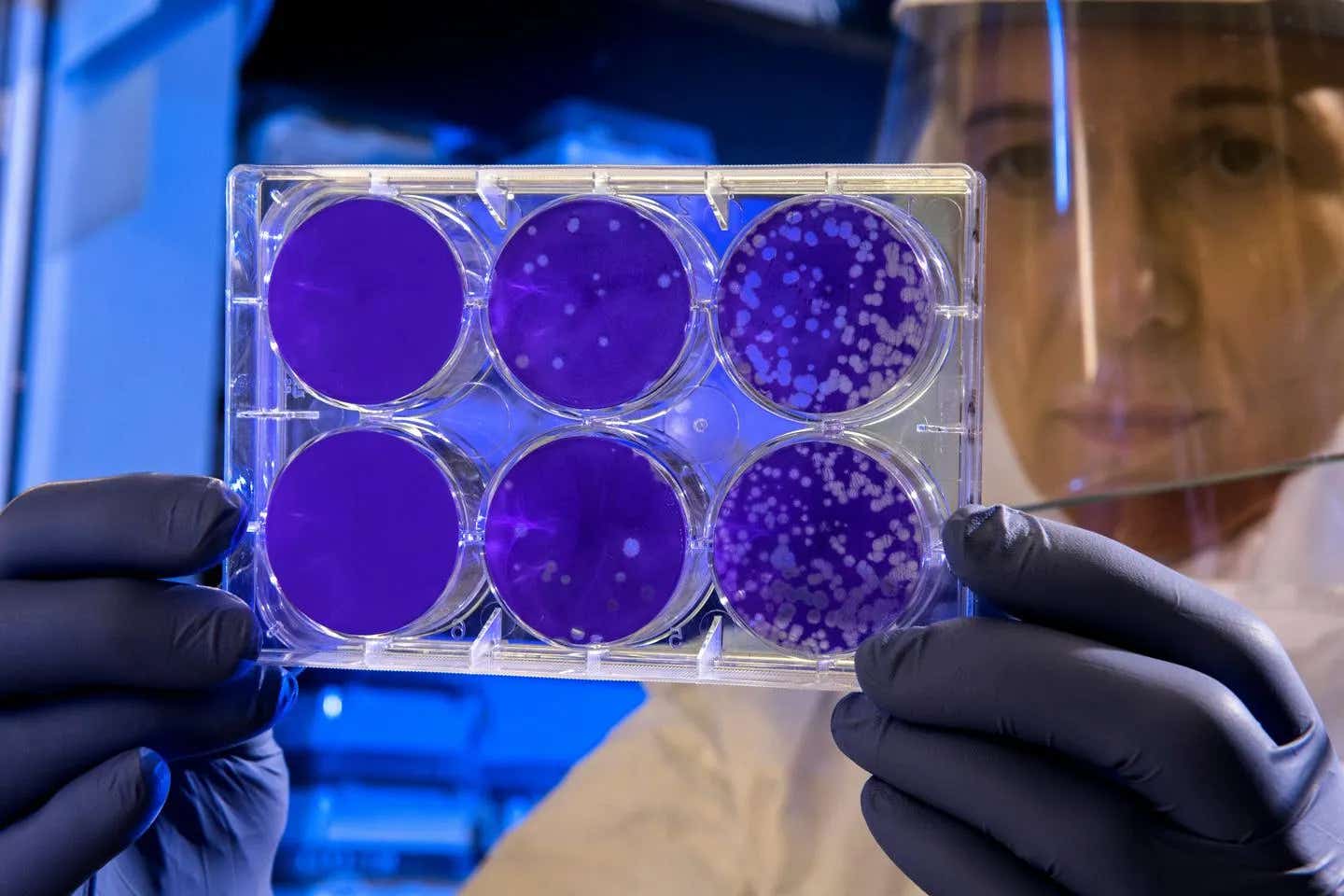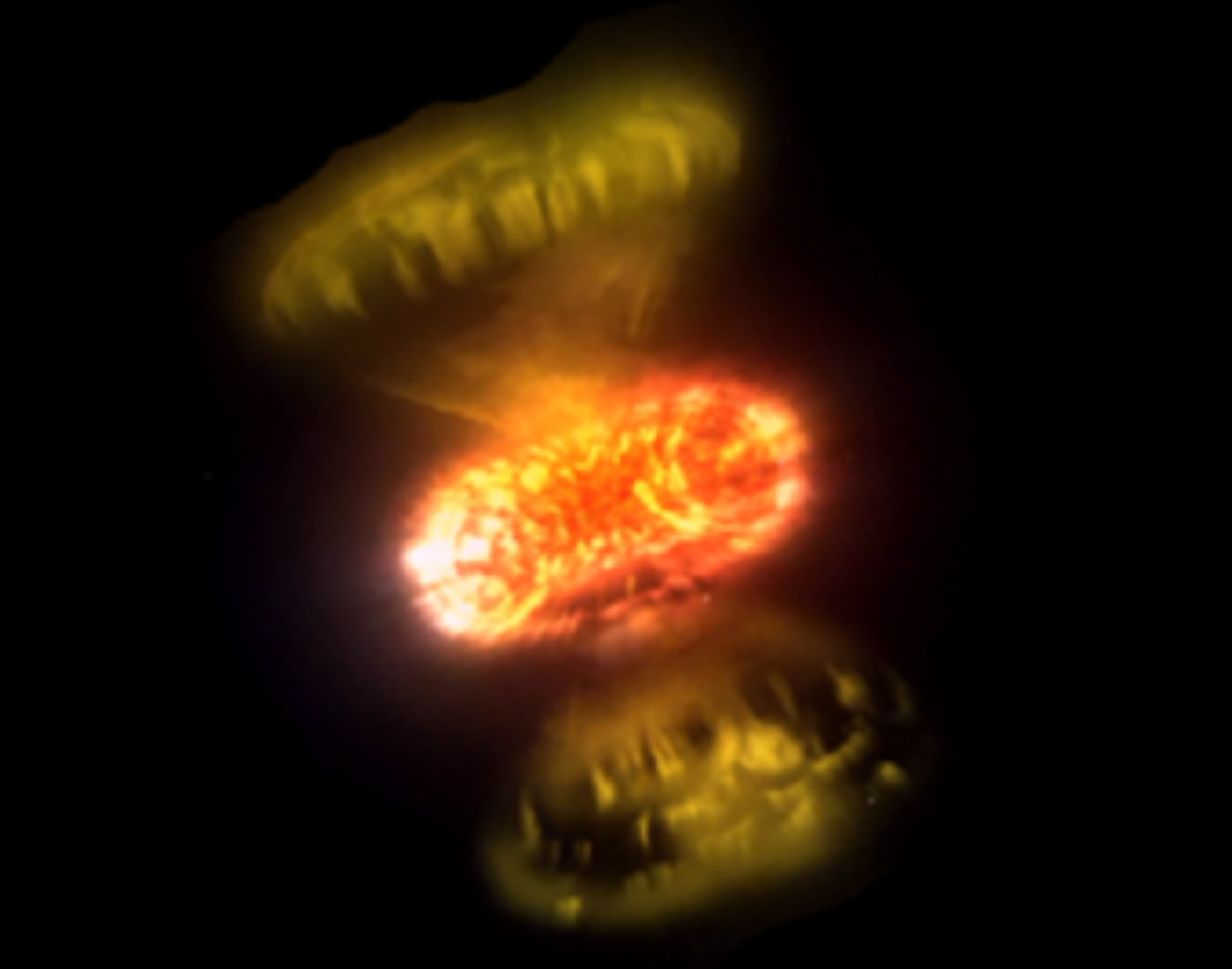Scientists discover ‘superfamily’ of predator proteins that attack and eat other harmful bacteria
Researchers at the University of Birmingham found PopA, a protein in bacteria with a unique bowl shape that traps lipids and could reshape microbiology.

Scientists discover PopA, a strange protein in bacteria that traps lipids and changes how microbes interact with their world. (CREDIT: CC BY-SA 4.0)
Deep under your feet, bacteria live busy lives. They swim, eat, and even hunt each other. Now, researchers at the University of Birmingham have discovered a strange protein that might change what we know about these tiny hunters.
The Mystery Protein
Published in the journal, Nature Communications, the team studied a bacterium called Bdellovibrio bacteriovorus. This microbe acts like a tiny predator, attacking and eating other bacteria. Scientists found that it carries a special protein called PopA. Unlike most similar proteins that have one or three parts, PopA builds itself into a shape with five parts.
“It’s significant because it challenges what scientists thought they knew about bacterial proteins,” said Professor Andrew Lovering, lead author of the study. He explained that this new shape suggests bacteria might have more complex ways of living than people thought before.
Seeing the Protein’s Shape
To study PopA, the team used advanced tools. They combined X-ray crystallography, cryo-electron microscopy, and molecular dynamics. These methods allowed them to see the protein’s structure in great detail.
PopA has a bowl-like shape that traps parts of the bacterial membrane. When researchers introduced PopA into harmless E. coli bacteria, it damaged their membranes. This suggests PopA helps Bdellovibrio attack and consume its prey.
But that is not all. AI-powered searches showed that similar proteins exist in many other bacteria. These related proteins can form groups of four, six, or even nine parts, all with the ability to trap fats, or lipids, inside them. Scientists think these proteins might form a superfamily with a special function that no one noticed before.
Related Stories
- Protein discovery could reverse Huntington’s disease damage, study finds
- Breakthrough new protein could help people live longer and stay healthier
- Powerful new protein effectively delivers cancer-fighting drugs directly into cells
Why This Matters
Outer membrane proteins (OMPs) like PopA sit on the surface of Gram-negative bacteria. They help bacteria stick to surfaces, send signals, break down molecules, and transport nutrients. Before this study, most known OMPs looked like barrels with either one or three parts. PopA’s five-part structure breaks that rule.
“It opens new possibilities for understanding how bacteria function and interact with their environments,” said Lovering. This new knowledge could lead to better ways to target harmful bacteria, with potential use in medicine and biotechnology.
The study also identified another family of proteins that form ring-like shapes. This suggests the ability to build rings is more common among bacteria than scientists realized.
How PopA Works
PopA, once called Bd0427, forms a pentamer – a group of five units. Each unit looks like a barrel, and together they create a bowl-shaped structure. Inside, it holds a layer of lipids. Usually, membrane proteins keep lipids out, but PopA traps them inside.
In the lab, scientists produced PopA by refolding it from inclusion bodies. They used detergents to keep it stable and then crystallized it to study its shape. Each barrel had 16 strands forming the outer wall, with an alpha-helical plug blocking its center. The outer rim of the structure measured about 55 angstroms tall, while the inner side was only 20 angstroms high, creating a flattened edge.
Unlike traditional porins, which allow substances to flow through, PopA’s center is blocked. MOLE analysis confirmed it has a zero-angstrom constriction, meaning nothing can pass through.
Trapping Lipids Inside
The five PopA barrels form a central chamber. This chamber is open to the inside of the bacterial membrane and is just the right size for a single layer of lipids. The inner surface of the chamber has hydrophobic, or water-repelling, residues. These help trap the lipid tails.
During the study, researchers saw strong electron density inside the chamber. They modeled ten octane molecules, representing the tails of detergent molecules used in the experiments. There was no path for these lipids to move in or out, suggesting PopA traps them firmly.
Another area behind one of the loops showed a similar density, where a palmitate molecule fit well. Its carboxylate end contacted a conserved arginine residue, while its long tail lay against a bulge formed by disrupted beta strands.
These features make PopA similar to a protein called FadL, which binds fatty acids, but PopA’s structure is larger and more complex.
Confirming the Structure
To check their results, the team also used cryo-EM on PopA. They created a version of the protein with a histidine tag inside one of its loops, called PopAhis. This tag helped them purify and image the protein. The cryo-EM structure matched the X-ray data, showing the five-part bowl shape and trapped lipids inside.
Simulations using molecular dynamics confirmed that PopA interacts with the membrane in a unique way. Its structure remains stable, and its lipid-trapping feature could play a role in how Bdellovibrio damages its prey.
A New Superfamily
Using AI-based searches, the team found PopA-like proteins in many other bacteria, not just predators like Bdellovibrio. Some form tetramers or hexamers, meaning groups of four or six parts. Despite these differences, they all share the lipid-trapping feature.
This suggests that PopA is just one member of a bigger family of proteins that bacteria use for interacting with their surroundings.
Beyond Predation
Bdellovibrio bacteriovorus is known for attacking Gram-negative bacteria. It can enter, kill, and eat these cells, making it a potential tool against harmful bacteria. Its ability to manipulate membranes is key to this process. PopA might be a part of that mechanism.
The bacterium makes unusual lipids and has complex transport systems. Previous studies showed that its OMP, later called PopA, could transfer into the inner membrane of prey cells, causing damage. This study now reveals the structure that enables this function.
Implications for Science and Health
Understanding how PopA works could lead to new antibiotics or treatments. If scientists can design drugs that block similar proteins in harmful bacteria, they could stop infections. Alternatively, they might use PopA-like proteins to deliver molecules into cells, opening doors in synthetic biology.
The discovery also forces scientists to rethink their models of bacterial membrane proteins. Before, they believed membrane proteins excluded lipids from their core. Now, PopA proves some proteins do the opposite.
Future Directions
Researchers hope to study more PopA-like proteins. They want to know why bacteria trap lipids and how this helps them survive. Some scientists think these proteins might transport lipids or signal other proteins in the membrane.
The unique bowl-shaped structure also fascinates engineers. It could inspire new designs for nanomachines or drug delivery systems.
For now, PopA remains a mystery with many secrets left to uncover. But thanks to the team at the University of Birmingham, the world knows one more detail about how bacteria thrive in places too small for human eyes to see.
Note: The article above provided above by The Brighter Side of News.
Like these kind of feel good stories? Get The Brighter Side of News' newsletter.



